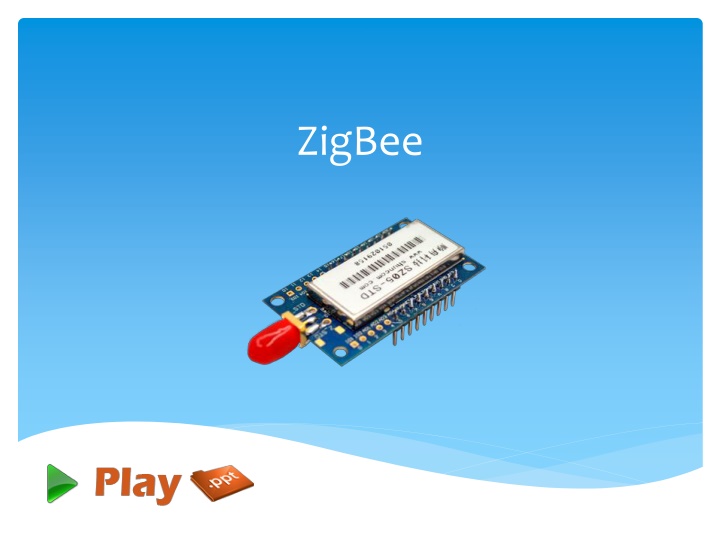
ZigBee Communication Protocols Overview
"Learn about ZigBee, a suite of high-level communication protocols for creating personal area networks. Explore its history, architectures, network types, simulations, released specifications, and those in development. Discover the benefits and applications of ZigBee technology."
Download Presentation

Please find below an Image/Link to download the presentation.
The content on the website is provided AS IS for your information and personal use only. It may not be sold, licensed, or shared on other websites without obtaining consent from the author. If you encounter any issues during the download, it is possible that the publisher has removed the file from their server.
You are allowed to download the files provided on this website for personal or commercial use, subject to the condition that they are used lawfully. All files are the property of their respective owners.
The content on the website is provided AS IS for your information and personal use only. It may not be sold, licensed, or shared on other websites without obtaining consent from the author.
E N D
Presentation Transcript
What is ZigBee? ZigBee is a specification for a suite of high level communication protocols used to create personal area networks built from small, low-power digital radios. It is a low power spin off of Wi-Fi. It s specification is based on IEEE 802.15.4 2003 Wireless Personal Area Networks Standard.
Why ZigBee? Can be used almost anywhere Easy to implement Little power to operate Long battery life Low cost
History 1998 - ZigBee was conceived 2003 Standardized 2004 Specifications ratified 2005 ZigBee 2004 announced for availability 2006 Revised 2007 ZigBee Pro was introduced
Types ZigBee Coordinator (ZC) ZigBee Router (ZR) ZigBee End Device (ZED)
ZigBee Networks ZigBee devices can form networks with Mesh, Star and Generic Mesh topologies among themselves. The network can be expanded as a cluster of smaller networks.
Simulation Network simulators, like NS2, OPNET, and NetSim can be used to simulate IEEE 802.15.4 ZigBee networks. These simulators come with open source C or C++ libraries for users to modify.
Released Specifications ZigBee Light Link 1.0 ZigBee IP 1.0 ZigBee Building Automation 1.0 ZigBee Gateway 1.0 ZigBee Green Power 1.0 ZigBee Home Automation 1.2 ZigBee Smart Energy 1.1b ZigBee Telecommunication Services 1.0 ZigBee Health Care 1.0 ZigBee RF4CE Remote Control 1.0 ZigBee RF4CE Input Device 1.0
Specifications in Development Phase ZigBee Smart Energy 2.0 ZigBee Retail Services ZigBee Smart Energy 1.2/1.3 ZigBee Light Link 1.1 ZigBee Home Automation 1.3
Security ZigBee provides facilities for carrying out secure communications, protecting establishment and transport of cryptographic keys, cyphering frames and controlling devices. It builds on the basic security framework defined in IEEE 802.15.4. ZigBee uses 128-bit keys to implement its security mechanisms.
Applications Wireless Sensor Networks Embedded Sensing Home Entertainment and Control Smoke and intruder warning Industrial control Building Automation
Thank You!!! www.playppt.com






















